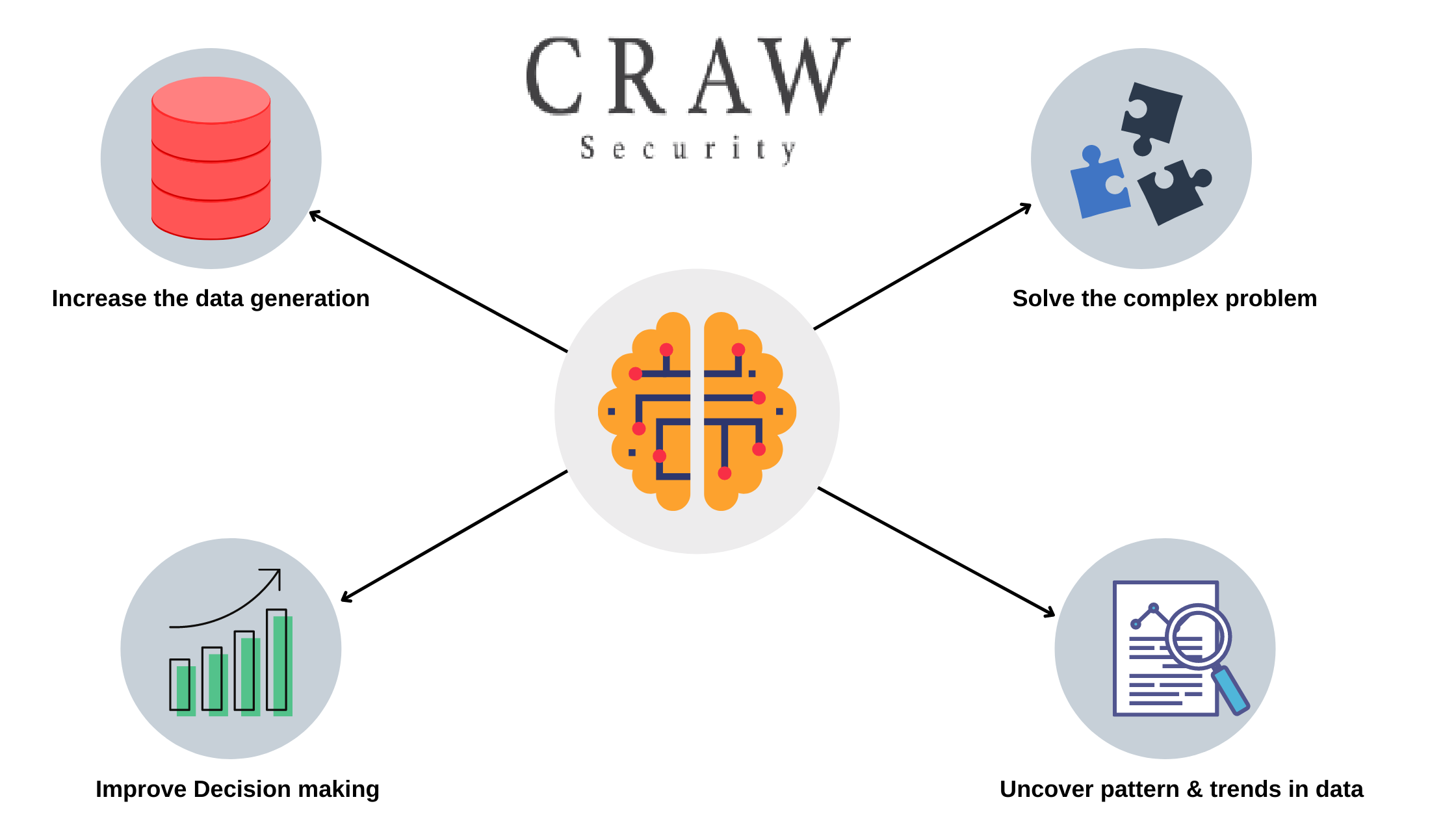Introduction to Machine Learning for Beginners [New 2025]

Introduction to Machine Learning for Beginners [New 2025]
Introduction to Machine Learning for Beginners
Compromising with the upgrading steps of today’s technology is a hard point for anyone who is living in a metropolitan and even in some kinds of updated villages in the world.
Since nobody is spared from the touch of smart gadgets and smart devices dedicatedly functioning on the varied concepts of Artificial Intelligence and Machine Learning, most people are drawn toward learning this authentic Need for Machine Learning to know more about what is machine learning.

Introduction to Machine Learning
Everyone is willing to have a brief introduction to Machine Learning for beginners to understand the fundamentals utilized to manufacture or develop smart machines that can ease the workload on various profiles in distinguished niches in the marketplace.
Initially, the terminology of Machine Learning was introduced by an American pioneer duly skilled in the genre of computer gaming and artificial intelligence – Mr. Arthur Samuel in 1959. Before that, the world was unaware of “what is machine learning?”
In general terms, Machine Learning is a subdomain of Artificial Intelligence whose main function is to understand any machine or device working within the process itself and suggest to the user the best understanding or insights gathered.
Machine Learning Process
In the need for machine learning concepts and to understand the Machine Learning Process better, one has to go deep and analyze the basic features and Practical Implementation of Machine Learning with full dedication and concentration.
Below, we have mentioned some of the points to know the importance of Machine Learning:
Data Generation Rise
The world requires a proper methodology that can be utilized to structure, analyze, and outline the valuable insights from the database just because of the massive data processing. That is the reason why machine learning comes into action at this exact moment. It exercises data to resolve any concerns and complex situations to obtain solutions to the most critical problems that come in day-to-day official chores within an organization.
Enhancement of Decision Making
With the usage of a distinguished set of Machine Learning algorithms duly employed for enhancing organizational decision-making. For instance, the varied methods of Machine Learning are employed to predict sales, forecast stock market downfalls, determine risks and exceptions, etc.
Reveal Patterns & Tendencies in a Dataset
Searching for encrypted patterns and obtaining key insights from the extracted datasets are the most crucial segments of Machine Learning. Through curtailing some early forecasted models and utilizing mathematical tactics, this segment of Machine Learning permits one to go into deep analysis and explore the datasets in the shortest possible time.
This is to unique feature of Machine Learning that it can do complex statistical analysis and mathematical calculations with precision and accuracy in less than a second while understanding these info datasets and obtaining patterns manually shall surely take some more time.

Resolving Intricate Problems
Since the Introduction of Machine Learning, from tracking the genes linked to a deadly communicable disease like COVID-19 to developing automated chauffeurless cars, Machine Learning is dedicating itself to almost everything and it can also be potentially used to resolve the most intractable problems with full ease.
Machine Learning Definitions
There are several machine learning definitions that are widely used by many technical analysts that employ machine learning algorithms in their daily official routine of works at their reputed organizations functioning devotedly in the genre of Machine Learning such as:
- Algorithm: The term ‘algorithm’ means a set of events or occurrences, whereas Machine Learning Algorithm is a cluster of rules and mathematical tactics widely employed to understand the several patterns from the datasets and to withdraw needful info from them. For instance, Linear Regression Algorithm.
- Model: It is the significant segment of Machine Learning that is duly trained by engaging a proper Machine Learning Algorithm. Since the Introduction to Machine Learning, an algorithm counts the needful methodology that a model has to initiate strictly based on a given command, just to get the right kind of output in the end.
- Predictor Variable: This special tactic of the dataset is used when you want to forecast the output.
- Apart from the above-mentioned Machine Learning Definitions, there are some additions to it such as Response Variable, Training Data, Testing Data, etc.

Types of Machine Learning
From the Introduction to Machine Learning to now it has been updated so many times that the types of Machine Learning have also evolved with respect to time and among the various methods and Types of Machine Learning techniques, a few are described below:
- Supervised Learning
A supervised learning method can be described when an algorithm self-learns from the available example data and concerned target responses that could include calculative values, like tags or classes. Just to forecast later with the right reactions when any new query arises comes under this particular category of Supervised Learning. Similarly, just like a teacher describes all the things in a supervised learning session under one’s guidance or supervision.
- Unsupervised Learning
At the moment, when an algorithm understands and self-learns via simple examples without any special concerning response, forsaking to the algorithm tracks the data patterns on its own. This kind of algorithm is likely to rearrange the dataset into something else, like fresh features that might depict a category or a whole fresh series of unrelatable values.
- Reinforcement Learning
An algorithm with a lack of examples, such as in unsupervised learning methodology. Nevertheless, you may take the example with either affirmative or negative feedback as per the solution the algorithm intends falls under the classification of Reinforcement Learning.
This is dedicatedly linked to applications for which the algorithm should make decisions and the so-called decisions that would have consequences. For real-time understanding in layman’s language, it is called learning through the hit and trial methods.
- Semi-Supervised Learning
It comes when an imperfect or partial signal is provided, and a training set with some (often many times) of the aimed outputs goes missing. We also know a special case of this Semi-Supervised Learning methodology described as Transduction where the whole arrangement of issue instances is known at learning time, excluding that particular segment of the aimed objects are absent.
Introduction to Machine Learning with Python
Since the beginning of the Introduction to Machine Learning, it has been so many times that we are reading it after so many updations. Nowadays, it has become hugely famous for the introduction to machine learning with Python Programming Language.
The high popularity of Python Programming Language in the Data Science Aspirants field might be due to the fact that from the introduction to machine learning it is the most suitable language for coding and analysis works.
Apart from that, it may be because of the enhanced development of the abundant availability of several deep learning frameworks specifically for the Python language recently, such as PyTorch, TensorFlow, Keras, etc.
One of the main specializations that this special coding language possesses is that it has so much easier and more readable syntax and the ability to be utilized as a scripting language. In addition, it authenticates to be agile as well as to-the-point both for preprocessing datasets as well as functioning with datasets in a direct manner.
Specialized Courses at Craw Security
There are various courses described below dedicatedly related to Introduction to Machine Learning, Artificial Intelligence, etc. that are being offered by Craw Cyber Security Institution at Saket and Laxmi Nagar branches imparting quality education catering to all the needs of the students:
| Course Name | Description | Link |
| Python Programming Language | The Python Programming Course imparts all the essential information required to do multi-purpose jobs that need Python coding skills. | Enroll Now |
| Artificial Intelligence | The highly intensified curriculum associated with AI Certification duly imparts all needful knowledge processing required to learn the Artificial Intelligence concepts by heart. | Enroll Now |
| Machine Learning | This dedicated course in Machine Learning is the most searched course in the modern era as it provides users with end devices that perform different functionalities using ML concepts. | Enroll Now |
Frequently Asked Questions:
1: What is machine learning in simple words?
In short and crisp sentences, the introduction to Machine Learning is a subdomain of Artificial Intelligence. It means that a Machine or device will learn on its own using varied AI methodologies to mimic human intelligence or imitate human behaviors recorded via various protocols.
2: What is the intro to ML?
You can understand the mechanism of Machine Learning whose purpose is to construct an efficient algorithm that can receive input data and utilize statistical calculations to forecast the responses while upgrading the outputs as a fresh informative database becomes available.
3: What are the 7 steps of machine learning?
The main steps considered crucial in the prime understanding of machine learning concepts are as follows:
- Collecting Data
- Preparing the Data
- Choosing a Model
- Training the Model
- Evaluating the Model
- Parameter Tuning
- Making Predictions
4: What is a machine learning model?
You may understand the machine learning model as a file that trains itself to detect some special kinds of patterns. One may train a model over an algorithm of datasets, offering it a series of datasets that it could utilize to understand and learn from those pieces of information by itself.
5: How do you make an ML model?
One can sincerely make a Machine Learning model by following the below-described steps:
- Define Appropriately the Problem
- Collect Data
- Choose a Measure of Success
- Setting an Evaluation Protocol
- Preparing The Data
- Developing a Benchmark model
- Developing a Better Model & Tunning its Hyperparameters
6. What is ML and its application?
ML or Machine Learning is a subdomain of Artificial Intelligence (AI) that permits various software apps in being able to more accurate at forecasting outcomes without being explicitly programmed to for the same.
Numerous algorithms related to Machine learning utilize historical datasets as input to forecast fresh output values.
7: What are the advantages of machine learning?
One can grab the highly classified advantages associated with Machine Learning by going through the following bullet points:
- Easily identifies trends and patterns
- No human intervention is needed (automation)
- Continuous Improvement
- Handling multi-dimensional and multi-variety data
- Wide Applications8: Who uses machine learning?
Machine Learning can be used in a huge spectrum of applications by numerous e-commerce and entertainment-related organizations like Flipkart, eBay, Myntraa, Netflix, Amazon Prime, Zee5, etc. for giving the right kind of recommendations to the user according to the user’s previous selection database history.
8: How is a machine learning model trained?
A model of Machine Learning is trained by simply giving it the availability to learn by determining the insights or users’ choices. In a supervised learning model, an ML algorithm constructs a model by reviewing multiple examples and trying to search for a proper model that lessens loss; this genuine process is called empirical risk minimization.
9: What are the six steps of the machine learning cycle?
The dedicated six steps of the machine learning cycle are described below:
- Data Access and Collection,
- Data Preparation and Exploration,
- Model Build and Train,
- Model Evaluation,
- Model Deployment, and
- Model Monitoring.
Conclusion
In the bottom line, I just want to state a simple thing Machine Learning is a thing for the current and future generations when it comes to using this concept on end-user devices. Meanwhile, anyone who is seeking some guidance or even a better understanding of this vast topic of Introduction to Machine Learning can contact Craw Security at Saket and Laxmi Nagar locations where we deliver our world-class Machine Learning Course in Delhi with the most updated technology in action for the good.
















